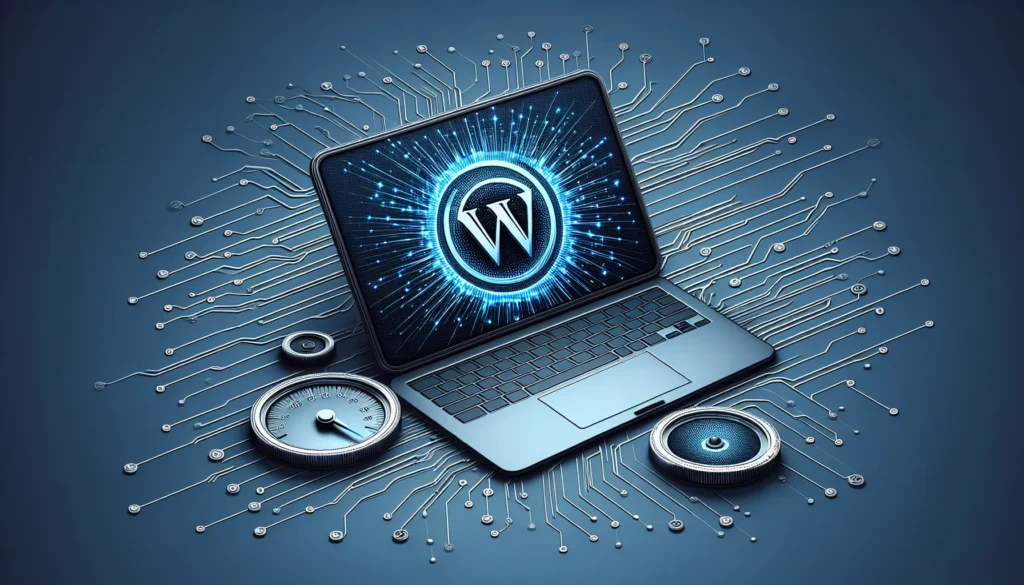Last Updated on
WordPress Speed Optimization Tips: How to Improve Your Site Performance
Unlock the secrets to turbocharging your WordPress site with practical speed optimization tips straight from industry experts. This guide strips away the complexity, offering clear, actionable strategies that will help boost your site’s performance. With expert insights on everything from script loading to code minification, prepare to transform your site’s speed with ease.
- Delay Loading Third-Party Scripts
- Implement Proper Image Optimization
- Use Caching and a CDN
- Switch to Lightweight Themes
- Utilize WP Rocket for Speed
- Lazy Load Videos and Minify Code
Delay Loading Third-Party Scripts
One thing that made a huge difference for us was delaying the loading of third-party scripts (like chat widgets, analytics, heatmaps) until user interaction.
Most people focus on caching, image compression, or CDNs–which are important–but third-party scripts often get ignored, and they quietly slow down everything, especially on mobile.
We used to load tools like HubSpot chat, Google Tag Manager, and a couple of tracking tools right away. Core Web Vitals were tanking. Then we added a small script that delays those non-critical tools until the user scrolls or clicks. The site still works perfectly, but those heavy scripts don’t block the initial load.
The result? Our mobile LCP dropped from 4.2s to 2.3s without changing themes or hosting. Desktop performance was even better.
So, if your site is already optimized and still feels sluggish, check those third-party scripts. Loading them on interaction instead of on page load can give you an instant speed win that most people overlook.
 Vishal Shah
Vishal Shah
Sr. Technical Consultant, WPWeb Infotech
Implement Proper Image Optimization
My top tip for optimizing WordPress website speed is implementing proper image optimization. Many sites we work on have image files that are unnecessarily large, drastically slowing down load times.
We use a combination of compression tools and lazy loading techniques to address this. First, we compress all images before uploading, reducing file sizes by 60-70% without noticeable quality loss. Then we implement lazy loading so images only load as users scroll to them.
On a recent client project, their homepage was taking 8.2 seconds to fully load. After implementing these image optimization techniques, we reduced it to 2.3 seconds – a 72% improvement. Their Google PageSpeed score jumped from 48 to 89.
This optimization had an immediate impact on their business metrics too – bounce rates decreased by 38% and the average session duration increased by over a minute.
The beauty of this approach is its simplicity. You don’t need advanced technical knowledge, just the right tools and a methodical process. For anyone looking to improve their WordPress site speed, start with your images – it’s often where you’ll see the most dramatic performance gains for the least effort.
 Harmanjit Singh
Harmanjit Singh
Founder & CEO, Website Design Brampton
Use Caching and a CDN
One of the most effective ways to optimize WordPress website speed is by implementing caching and a content delivery network (CDN). Caching reduces the load on your server by storing static versions of your site, while a CDN distributes content across multiple servers worldwide, ensuring faster load times for users regardless of their location.
For example, a web development agency struggling with slow page speeds integrated WP Rocket for caching and Cloudflare as a CDN. The result? Their homepage load time dropped from 4.8 seconds to 1.2 seconds, improving Core Web Vitals and boosting their SEO rankings. This directly contributed to a 23% increase in organic traffic and higher conversions.
Beyond caching, optimizing images using tools like ShortPixel or TinyPNG, reducing HTTP requests by minimizing plugins, and using a lightweight theme like GeneratePress can significantly impact speed. Also, updating to PHP 8+ and enabling GZIP compression further enhances performance.
Tip: Always test changes with tools like GTmetrix or PageSpeed Insights to measure improvements and tweak accordingly. Speed optimization is an ongoing process, so regular monitoring is key.
 Bijal Shah
Bijal Shah
Senior Business Development & Digital Marketing Manager | Closing Deals & Optimizing Online Presence, WP Plugin Experts
Switch to Lightweight Themes
Cut the fluff. One of the best changes I’ve seen is switching from bloated page builders to lightweight themes. We moved a law firm’s site off Elementor and rebuilt it using a clean theme with Gutenberg blocks. No extra animations, no slow-loading sliders. The speed score jumped from 56 to 91 on mobile. Way better user flow too.
Keep plugins tight. Every extra plugin adds load time and risks conflicts. We trimmed 18 plugins down to 7–each one actually needed. That alone dropped load times from 5.2s to 1.8s. Clients noticed. Fewer bounce rates, better form submissions, and fewer “site won’t load” complaints. Speed isn’t optional–it’s how you stay in the game.
 Natalia Lavrenenko
Natalia Lavrenenko
Ugc Manager/Marketing Manager, Rathly
Utilize WP Rocket for Speed
As an SEO consultant, I’ve seen firsthand how site speed impacts rankings, user experience, and conversion rates. One of the most effective tools for optimizing WordPress performance is WP Rocket. After implementing it for a client, their page load time dropped from 4.2 seconds to 1.3 seconds, leading to a noticeable improvement in search rankings and a lower bounce rate.
Three key features made the biggest difference. Leverage Browser Caching ensured returning visitors didn’t have to reload static assets, speeding up page loads. Gzip Compression reduced file sizes, making pages lighter without compromising quality. JavaScript Deferring prevented unnecessary scripts from blocking rendering, allowing the most important content to load first.
WP Rocket is a quick win when it comes to SEO – it requires no coding, yet delivers measurable results almost instantly. Faster sites rank better, convert more, and keep visitors engaged.
 Peter Wootton
Peter Wootton
SEO Consultant, The SEO Consultant Agency
Lazy Load Videos and Minify Code
One of the biggest speed killers we faced at Transfez was YouTube embeds. Since we use a lot of videos for product promotions, they were slowing down our site and hurting our PageSpeed score. I tried manually adding lazy loading in the theme files, but it barely made a difference. In the end, I had to resort to using a plugin. After testing several, a3 Lazy Load worked best, boosting our PageSpeed score by around 20 points. However, lazy-loading images actually made things worse for us, so it’s always important to test before assuming it will help.
Themes can also slow you down. Many themes look fast in demos but turn into bloated messes once in use. Before buying one, check reviews, see how their support responds, and make sure it is customizable. If a theme comes packed with unnecessary scripts and heavy animations, your site will remain slow no matter what else you optimize.
Images are another hidden problem. Always compress them to below 100KB before uploading. WebP is great, but Photoshop’s Save for Web feature works just as well. Oversized images can ruin your LCP (Largest Contentful Paint) score, which is frustrating to fix. After optimizing our images, our LCP improved by nearly 1.5 seconds.
Animations? Skip them. We had fancy fade-ins and effects, thinking they made the site look premium. But they just slowed everything down, especially on mobile. After removing them, our First Contentful Paint and LCP improved by almost 30 percent. If you must use animations, keep them minimal and lightweight.
Minifying code helps too. Many use plugins for this, but if you know your way around code, manually minifying CSS and JavaScript in theme files is better. It gives more control, reduces plugin bloat, and keeps things cleaner.
WordPress speed optimization is all about trial and error. Some solutions work, some don’t. But if you want quick improvements, start with lazy-loading videos, minifying code, and optimizing images. These changes gave us a massive speed boost without breaking anything.
 Arya Difa Hendrawan
Arya Difa Hendrawan
SEO Specialist, Transfez (YC W22)




